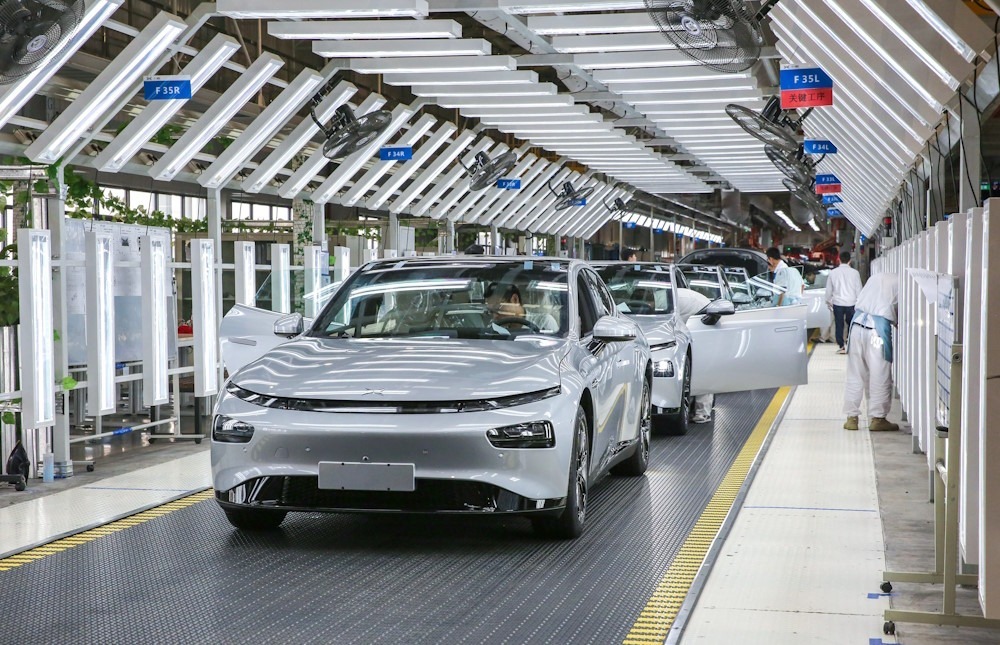A New Divide Emerging in the EV Auto Industry

Two camps have formed in the international auto market as a result of the proliferation of EVs: one that is open to Chinese-made vehicles and another that is actively working to keep them out.
In the spring of last year, a gathering of Nissan officials gathered at the Yokohama, Japan, headquarters of the firm, gazing at a global map.
The map was color-coded in four ways: red for countries that ban Chinese vehicle exports, yellow for countries that might ban them in the future, gray for countries that might put limitations in the future, and green for countries that don’t have any limits or aren’t likely to.
The purpose of the simulation was to determine if Nissan could still potentially export electric automobiles and other vehicles manufactured in China despite the increasing geopolitical concerns. Approximately 60% of the nations were deemed “green” or “gray” by the executives. The total was greater when the “yellow” countries were included.
Masashi Matsuyama, president of Nissan’s China investment branch, said that 80% of the market has an environment that might tolerate automobiles built in China when looking at the map. When asked which nations were in which color group, Nissan remained mum.
For their export plan, Nissan opted to test the waters. Although it has not yet revealed the precise locations of the electric and plug-in hybrid vehicles, the automaker announced in November that it would begin delivering them from China in 2025.
Not only has Nissan been growing its exports from China, but so have Ford, Tesla, and BYD. Carmakers are adjusting their plans for production and sales locations in response to geopolitical changes, which are changing the face of the industry.
The globe is become more divided along economic lines, and the global car sector split is the latest example of this trend. Other industries, including telecom and the internet, have also seen splits.
Since electric vehicles (EVs) and cars in general are cheaper to produce in China, more international automakers are thinking about expanding exports to certain countries. Although the United States is unlikely to acquire many, markets in Southeast Asia and the Middle East are expanding at a rapid pace.
At the same time, Chinese automakers are establishing production facilities in Mexico and Europe, where they may be subject to antisubsidy investigations, in the hopes of evading tariffs in markets like the United States.
Chinese and international automakers are being extra careful about the sources of certain technologies and components, as well as the markets that could potentially receive their vehicles equipped with these components, in the event that such markets are subject to future penalties or limitations.
To mitigate the effects of geopolitical tensions, Volkswagen, the largest foreign automaker in China, intends to retain certain technologies created in China, including chips and software associated with autonomous driving, within China. Thousands of high-end vehicles containing a banned Chinese component were recently unable to be imported to the United States.
Allegedly, this year in China, authorities pushed for major Chinese carmakers to buy more chips from local vendors.
Two groups of buyers may form: one in an area where cheaper, more technologically advanced electric vehicles are becoming the norm, and another in an area where more expensive vehicles are on the market and EV adoption is delayed, possibly including the United States.
“New technology will only be dispensed at premium prices” and “mature markets like the U.S.A. will become increasingly isolated,” according to Bill Russo, CEO of the Shanghai-based strategy firm Automobility.
Some American automakers have been putting off EV expenditure plans as the market for these vehicles shows signs of slowing down. The world’s largest electric vehicle market, China, is seeing increased competition and manufacturers turning a loss, but that hasn’t stopped many corporations from pouring resources into the sector.
Although sales growth has been slowing, industry leaders claim that electric vehicles and other battery-powered vehicles currently make up one-third of sales in China, indicating that the country’s electric revolution is on track. China is encouraging its automakers and suppliers to increase exports and expand internationally.
Some parts of the world are becoming increasingly worried that cheap Chinese goods may flood the market. With the shipment of almost five million vehicles abroad last year, China overtook Japan as the leading exporter of automobiles. Some of the most popular locations were Saudi Arabia, Mexico, and Australia.
Due to the additional 25% duty that the United States imposes on Chinese-imported vehicles, Chinese cars are practically nonexistent in the country. To prevent an influx of Chinese electric vehicles into the American market, President Biden directed the Commerce Department to launch an inquiry into software developed outside the United States in February.
Data from the Atlantic Council showed that in 2023, out of the $34 billion exported, Europe was the largest recipient of electric vehicles built in China, making up almost 40% of that total. Last year, the EU began looking into Chinese electric car manufacturers for possible antisubsidy violations. European Commission officials announced in early March that they had uncovered proof of vehicle subsidies and were making preparations to impose tariffs retroactively.
The European probe has been branded as protectionist by China, which has also demanded that the United States cease its practice of discrimination against Chinese enterprises.
A number of China’s leading exporters are domestic enterprises, such Chery Automobile and BYD, which has surpassed Tesla as the leading global seller of electric vehicles and has lofty ambitions to expand exports.
Shanghai is strategically located near major markets in Southeast Asia and the Middle East, making it an attractive option for global automakers looking to set up shop in the country.
The Asia-Pacific area is one of several that Tesla has been shipping vehicles manufactured in Shanghai to. According to statistics provided by the China Passenger Car Association, the number of vehicles exported last year was 344,000, an increase of 27% over the previous year. As a result of falling sales in China, Ford is shifting its focus to Southeast Asia and the Americas. More than 100,000 vehicles were reportedly exported from China in the past year.
Toyota Thailand statistics showed that Chinese brands captured the majority of electric-vehicle sales in 2023, causing the traditionally dominating Japanese carmakers, such as Nissan and Toyota, to have their market share drop to 78% from 85% the previous year.
According to Nissan’s Matsuyama, worldwide customers view China’s automotive technology as robust enough to be adopted on a global scale. According to him, we intend to use that in our worldwide plan.










